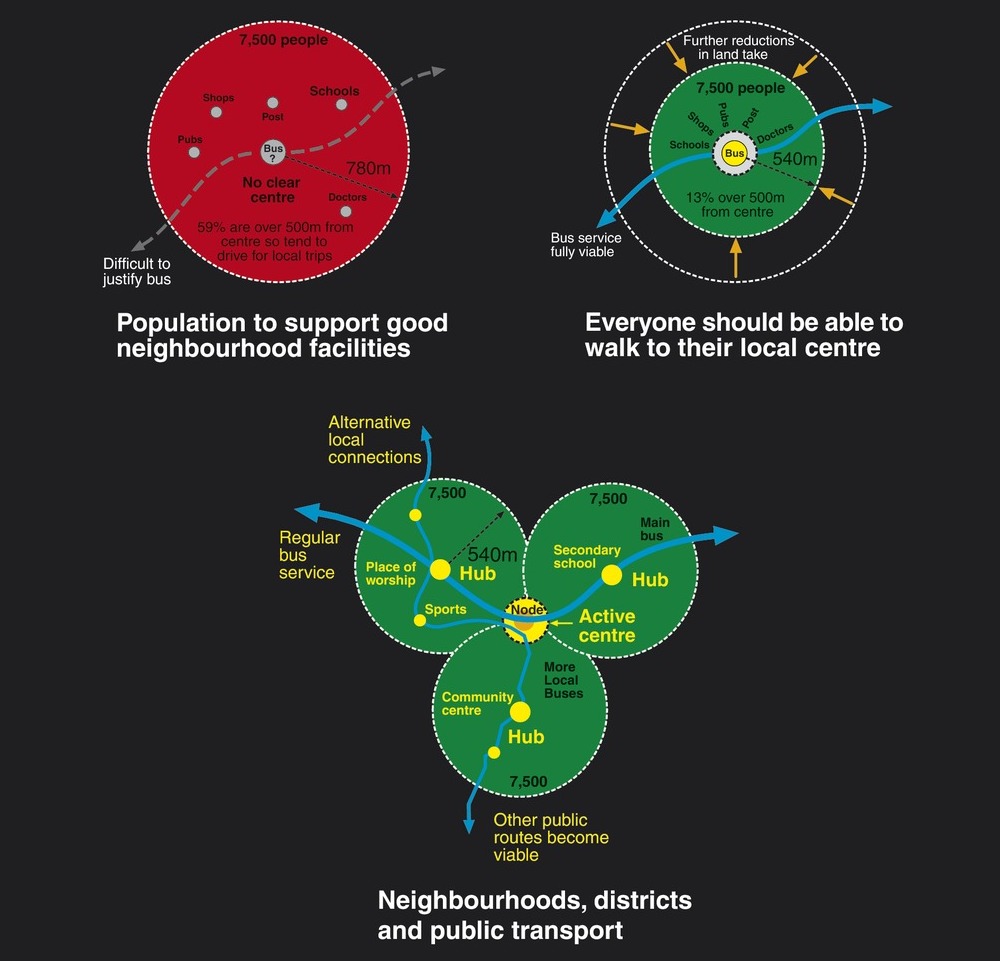Towards an urban renaissance
The Urban Task Force (UTF) was established by the Department of Environment, Transport and Regions (DETR) in 1998. The then Deputy Prime Minister, John Prescott, appointed architect Richard Rogers as the chair of the Urban Task Force. This followed publication of Rogers’ seminal book ‘Cities for a small planet’ in 1997, a re-working of his 1995 BBC radio Reith Lectures.
The purpose of the Urban Task Force was to ‘…identify causes of urban decline and establish a vision for cities in England, founded on the principles of design excellence, social well-being and environmental responsibility...’ (ref The Urban Renaissance six years on, Richard Rogers). The Task Force included members from industry, academia, local and regional government. They confronted the challenges posed by the decline of the inner-cities, the need for 4 million additional households and the perceive blight of suburban sprawl which was swallowing greenfield land.
Their findings were presented in a report to the government on 29 June 1999 ‘Towards an urban renaissance, Final report of the Urban Task Force’.
More than 100 recommendations were made, suggesting that cities should be more sustainable, better designed, more compact, better connected and should support a wider range of diverse uses. This would require strengthened democratic local leadership, increased public participation and greater investment in urban areas.
The key themes and measures described in the executive summary to the report were:
- Designing the urban environment.
- Making the connections.
- Managing the urban environment.
- Delivering urban regeneration.
- Investing in skills and innovation.
- The 60% target: our assessment.
- Planning for change.
- Managing the land supply.
- Cleaning up the land.
- Recycling the buildings.
- Making the investment.
- Sustaining the renaissance.
The 60% target referred to the government’s target to accommodate 60% of new dwellings on previously-developed land (brownfield land) in order to protect greenfield sites.
Recommendations included:
- Limiting the release of greenfield land.
- Requiring that public bodies and utilities release redundant urban land.
- Harmonising VAT on new build and residential conversions.
- Building at a density which supports local services and fosters a strong sense of community.
- Better education and training.
- The development of local architecture centres.
- Targeting expenditure on projects that benefit pedestrians, cyclists and public transport users.
- Creating Home Zones that put the pedestrian first.
- Strengthening local authorities.
- Making the planning system more positive and involving neighbourhoods involved in the decision-making process.
- Establishing a fund for local groups to improve their own neighbourhoods.
- Introducing Urban Priority Areas.
In November 2005, the UTF published The Urban Renaissance six years on an ‘…independent report based on the personal experience of Urban Task Force members on the ground, designed to stimulate public debate and encourage new thinking’. It noted that there had been some successes in the six years since publication of the original report, but that new issues had emerged and many problems remained, including; continued migration of the middle classes to the suburbs, poor transport provision and a lack of housing supply.
In 2013, Ed Vaizey, Minister for Culture, Communications and Creative Industries in the Department for Culture, Media and Sport (DCMS) commissioned architect Terry Farrell to produce ‘Our future in place, The Farrell Review of Architecture + the Built Environment (FAR)’. Published in 2014, some saw this as the successor to the reports of the UTF, although Farrell suggested that Rogers’ remit ‘…was focused more specifically on town centres and urban regeneration. It also differed in that its primary role was to help the policy formulation of a government taking office….’
[edit] Related articles on Designing Buildings
- Brownfield land.
- Compact sustainable cities.
- Farrell Review.
- Green belt.
- Richard Rogers - A Place for all People.
- RSH+P.
- Smart cities.
- Urban Heritage, Development and Sustainability.
- Urban Task Force.
[edit] External references
- The Urban Renaissance six years on, Richard Rogers.
- Towards and urban renaissance.
- 1995 BBC radio Reith Lectures.
Featured articles and news
Professional practical experience for Architects in training
The long process to transform the nature of education and professional practical experience in the Architecture profession following recent reports.
A people-first approach to retrofit
Moving away from the destructive paradigm of fabric-first.
International Electrician Day, 10 June 2025
Celebrating the role of electrical engineers from André-Marie Amperè, today and for the future.
New guide for clients launched at Houses of Parliament
'There has never been a more important time for clients to step up and ...ask the right questions'
The impact of recycled slate tiles
Innovation across the decades.
EPC changes for existing buildings
Changes and their context as the new RdSAP methodology comes into use from 15 June.
Skills England publishes Sector skills needs assessments
Priority areas relating to the built environment highlighted and described in brief.
BSRIA HVAC Market Watch - May 2025 Edition
Heat Pump Market Outlook: Policy, Performance & Refrigerant Trends for 2025–2028.
Committing to EDI in construction with CIOB
Built Environment professional bodies deepen commitment to EDI with two new signatories: CIAT and CICES.
Government Grenfell progress report at a glance
Line by line recomendation overview, with links to more details.
An engaging and lively review of his professional life.
Sustainable heating for listed buildings
A problem that needs to be approached intelligently.
50th Golden anniversary ECA Edmundson apprentice award
Deadline for entries has been extended to Friday 27 June, so don't miss out!
CIAT at the London Festival of Architecture
Designing for Everyone: Breaking Barriers in Inclusive Architecture.
Mixed reactions to apprenticeship and skills reform 2025
A 'welcome shift' for some and a 'backwards step' for others.























